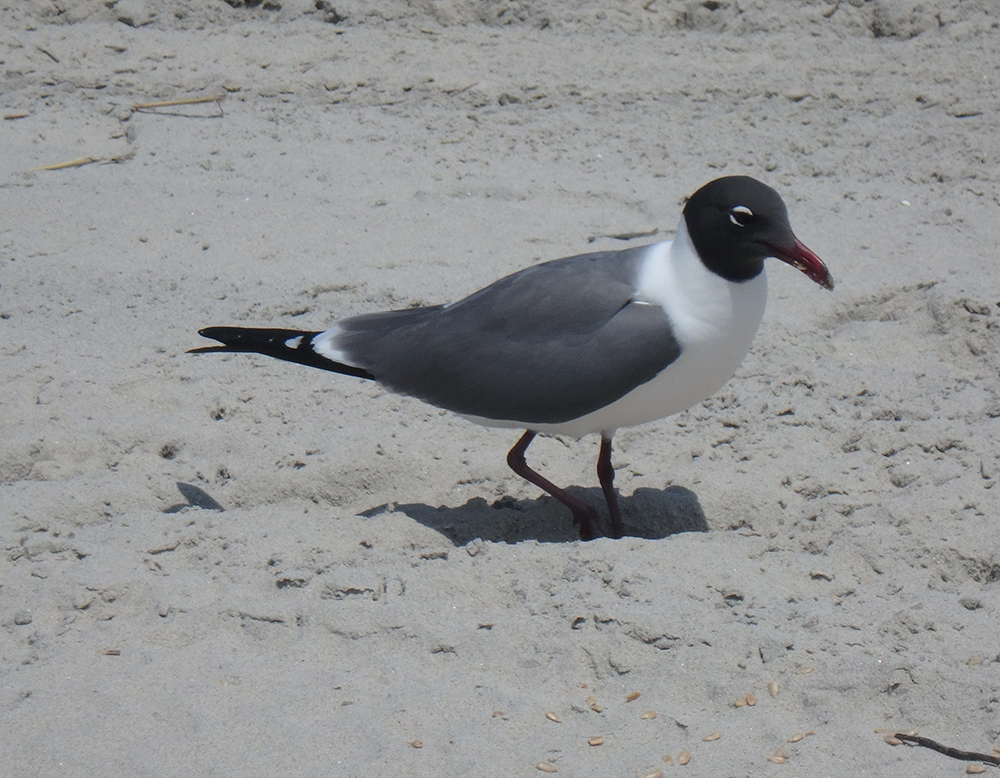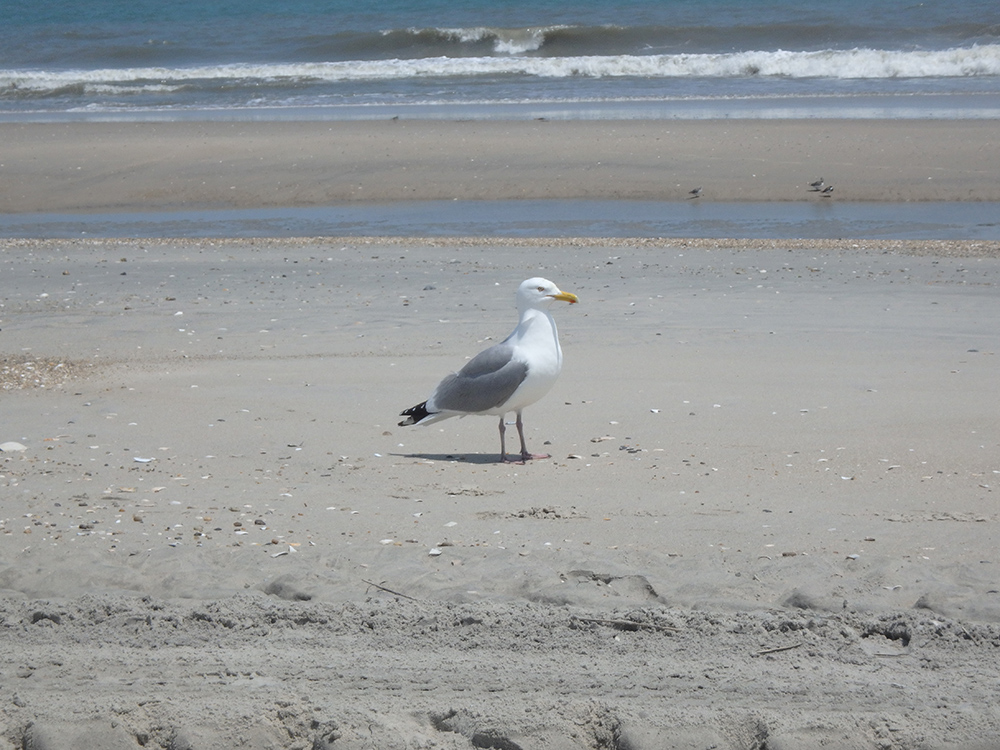On Jersey Shore Beaches, Opportunistic Seagulls Get the Last Laugh
An Introduction to Coastal Seagulls
By Steffen Klenk

There are more than 50 different species of gulls. All along our coastline, you can normally find up to five common species; the herring, laughing, ring-billed, Bonaparte’ and great black-backed seagulls.
Like it or not, seagulls have returned to our precious shores and will, without a doubt, manage to keep beach and boardwalk-goers on their toes all summer long.
In our area, the most common type of summer season seagull is the laughing gull. These black-headed birds are year-long residents from the Outer Banks of North Carolina all the way down to Florida and the Gulf of Mexico coast.
They regularly migrate to New Jersey in early to mid-spring, during the height of mating season, and will stay until October. You will generally find them along our shoreline, flying over the beaches and boardwalks, salt marshes and back bays.

While most gulls migrate during the winter, those that stay behind are protected from the harsh elements thanks to their feathers. Their plumage acts as a natural insulator, trapping their body heat. Over the years, they have adapted to flying behind people and quickly swooping in for a meal.
By nature, seagulls are carnivores. Their diet typically consists of insects, reptiles, amphibians and small rodents. They also feed on fish and crabs; they know how to break clams and other shellfish to get to the good parts.
Did you know that seagulls can live anywhere from 10 to 15 years? They are also one of the few animals that can drink salt water without hesitation. This is a distinct and unique property.
The salt that they take in is absorbed more easily, moving through their blood stream into salt glands that sit directly above their eyes. Excess salt exits the body through their nostrils.
Across the pond, the European herring gull is the most common species found. Here’s an interesting fact: seagull attacks are so common in Europe that some local governments have released trained falcons to discourage these birds in public areas. It almost sounds like a scene from Alfred Hitchcock’s movie “The Birds.”
You’ve probably had that moment where you’re on the boardwalk or sitting at the beach and from out of nowhere, a seagull swoops down and steals your lunch.
Most seagulls are opportunistic scavengers and will not hesitate to approach an unsuspecting human with food in hand. Due to their aggressive behavior, all feeding of these birds is not only discouraged, it is now illegal.
Some local shore towns have passed laws to prevent feeding birds and other wildlife on the beaches and boardwalk. In Ocean City, feeding the seagulls could cost you up to $500 and possible jail time.
These laws have been enacted due to the gulls’ intrusive and attacking behavior, which they have developed into an art form. They have an amazing ability to spot food being given to other gulls. When it happens, you (and your fellow beachgoers) are surrounded by loud, squawking birds within seconds.
Whether you are here on vacation or a South Jersey native, remember that for seagulls, this is their home, too. It’s important for us to protect nature and all its beauty.
Please be kind and courteous toward our feathered friends in the sky.





